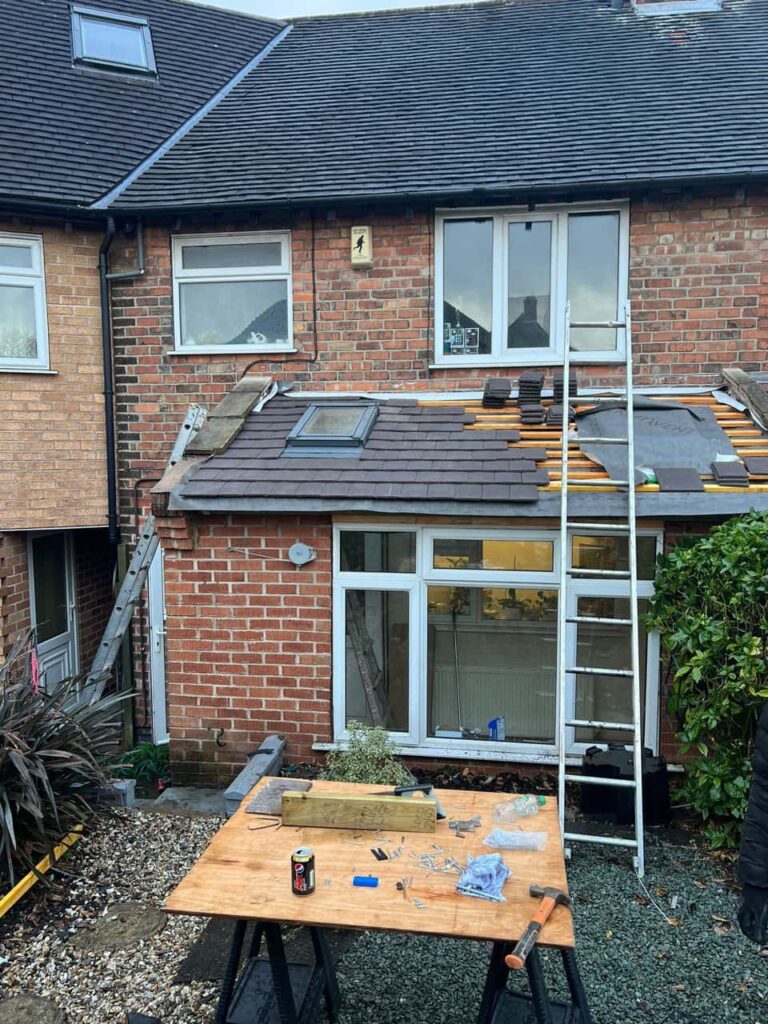Introduction: At Kingswinford Roofing Repairs, we know that the aftermath of a storm can leave homeowners anxious about potential damage to their roofs. Proper inspection and timely repairs are crucial to maintaining the integrity of your roof and preventing further issues. In this blog post, we’ll guide you through the steps to check your roof after a storm, ensuring your home remains safe and secure.
Why Inspecting Your Roof is Important
Storms can cause significant damage to roofs, often in ways that are not immediately visible. High winds, heavy rain, hail, and falling debris can all compromise your roof’s structure, leading to leaks, weakened support, and other issues. Regular post-storm inspections can help you identify and address problems early, preventing costly repairs.
Safety First
Before you begin inspecting your roof, it’s essential to prioritise safety:
- Wait for the Storm to Pass: Ensure that the weather has completely cleared before going outside to inspect your roof.
- Use Proper Equipment: If you need a ladder, ensure it is stable and secure. Consider using a harness for added safety.
- Avoid Walking on the Roof: Walking on a potentially damaged roof can be dangerous. Instead, conduct most of your inspection from the ground or use binoculars to get a closer look at specific areas.
Step-by-Step Roof Inspection Guide
1. Inspect from the Ground
Start by examining your roof from the ground. Look for signs of damage, such as missing shingles, displaced tiles, or visible debris. Pay attention to:
- Shingles: Check for shingles that are missing, cracked, or curling.
- Tiles: Look for broken or displaced tiles.
- Flashing: Inspect the metal flashing around chimneys, vents, and other roof penetrations for signs of damage or displacement.
- Gutters: Check gutters and downspouts for dents, clogs, or signs of dislodgment. Look for granules from asphalt shingles, which indicate wear and tear.
2. Check the Roof’s Surface
If you can safely access your roof, perform a closer inspection:
- Shingle Condition: Examine shingles for any that are loose, broken, or missing.
- Tile Condition: Inspect tiles for cracks, chips, or displacement.
- Debris: Remove any branches, leaves, or other debris that may have accumulated on the roof.
- Water Pools: Look for standing water or areas where water may have pooled, indicating possible drainage issues.
3. Inspect the Attic
Your attic can provide valuable clues about roof damage:
- Leaks and Moisture: Look for signs of water infiltration, such as damp insulation, water stains, or mould.
- Light Penetration: Check for any spots where daylight is visible through the roof, indicating gaps or holes.
- Structural Damage: Examine the rafters and support structures for signs of warping, cracking, or other damage.
4. Examine the Interior
Inspect the interior of your home for any signs of roof damage:
- Ceilings and Walls: Look for water stains, discolouration, or peeling paint, which can indicate leaks.
- Windows and Doors: Check around windows and doors for signs of water intrusion or damage.
What to Do if You Find Damage
If you identify any damage during your inspection, it’s important to act quickly:
- Document the Damage: Take detailed notes and photographs of all areas of concern. This documentation will be useful for insurance claims and when seeking professional repairs.
- Contact a Professional: Contact a reputable roofing contractor, such as Kingswinford Roofing Repairs, for a thorough assessment and repair. Avoid attempting major repairs yourself, as this can be dangerous and may void warranties.
- File an Insurance Claim: If the damage is extensive, contact your insurance provider to file a claim. Please provide them with your documentation and follow their process for assessment and coverage.
Preventative Measures for Future Storms
While you can’t prevent storms, you can take steps to minimise potential damage:
- Regular Maintenance: Schedule regular roof inspections and maintenance to keep your roof in good condition.
- Trim Trees: Keep trees near your home trimmed to prevent branches from falling on your roof during a storm.
- Secure Loose Items: Secure outdoor furniture, equipment, and other items before a storm to prevent them from becoming projectiles.
Conclusion: Regularly inspecting your roof after a storm is essential for identifying and addressing damage early, ensuring the longevity and safety of your home. By following these steps and prioritising safety, you can effectively manage post-storm roof inspections and repairs. At Kingswinford Roofing Repairs, we provide expert roofing services to help you maintain a strong and durable roof.
Call us on: 01384 319 097
Click here to find out more about Kingswinford Roofing Repairs
Click here to complete our contact form and see how we can help you with your roofing needs.

